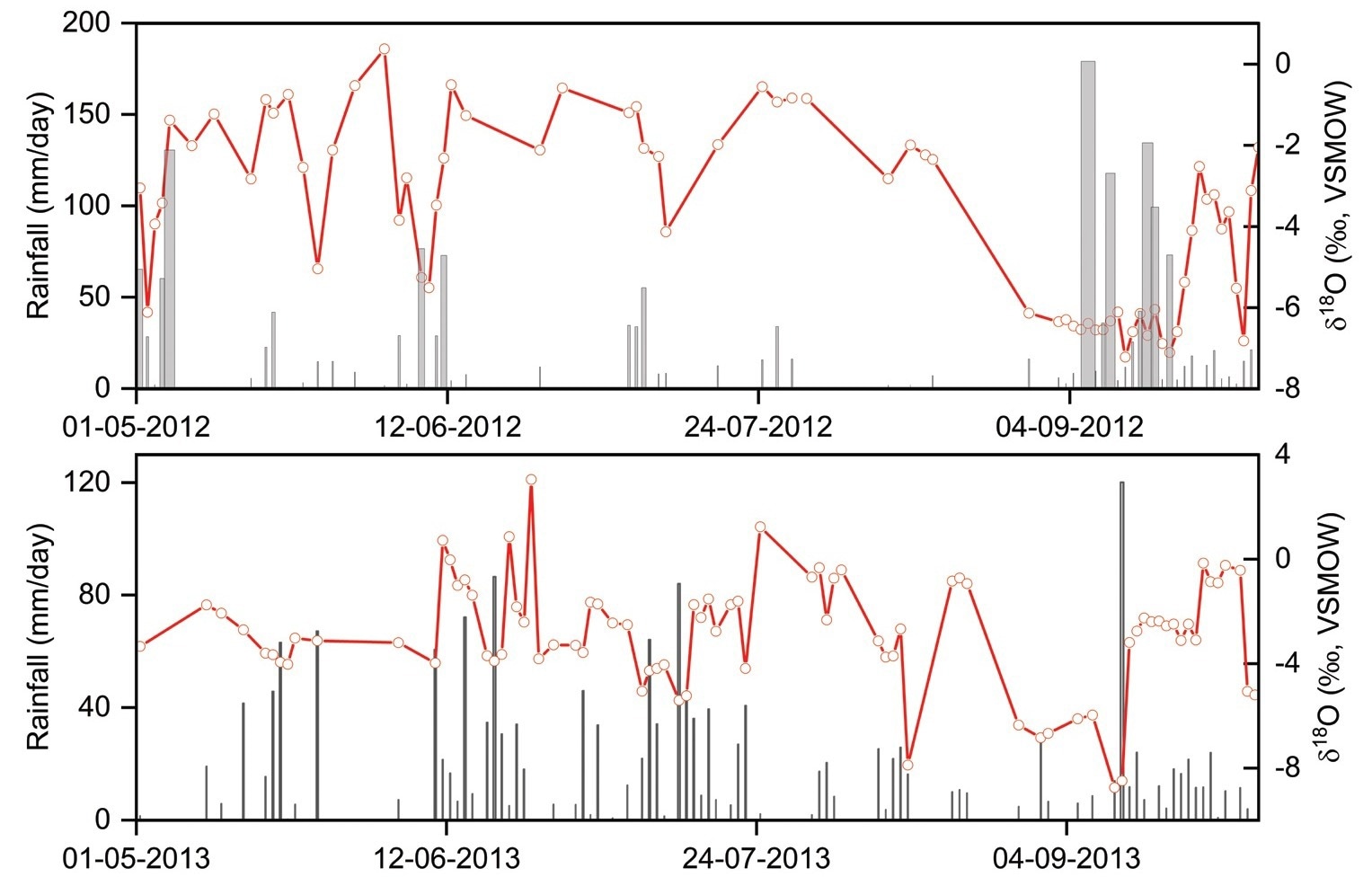The Bay of Bengal (BoB) is positioned in the northeastern region of the Indian Ocean. It is the largest bay in the world and has a triangular-shaped sea. It creates a substantial volume of moisture that travels to the Indian subcontinent, causing intense precipitation in the eastern parts of India and adjacent countries.
This phenomenon is particularly notable during the monsoon season, which lasts from May to September. The country’s economic and agricultural activities rely heavily on summer rainfall. The BoB’s observed characteristics are considered to play a key part in the generation and transport of moisture.

The Bay of Bengal is the largest bay in the world and forms a triangular shaped sea. Image Credit: ABB Measurement & Analytics
This region displays a relatively high sea surface temperature (SST), with temperatures reaching 28 °C and above during the monsoon season, which favors convection and supplies vapor to the atmosphere throughout the year.
However, the BoB serves as a major sink of water vapor during the summer monsoon season as precipitation events significantly surpass evaporation. Identification of the underlying sources behind moisture generation and transportation is a crucial feature of the hydrological cycle.
It is especially relevant to examine those specific mechanisms in the BoB as they can facilitate understanding of the monsoon variability and enable management and impact mitigation of the extreme rainfall events that are a result of tropical cyclones.
A reliable method for examining atmospheric moisture sources and sinks is the analysis of physical tracers, including stable isotopes in precipitations over the Andaman Islands, which lie in the BoB.
The islands display a vast forest cover (approximately 92% of the surface), meaning the potential secondary source of moisture (i.e., soil moisture) is expected to be low. The isotopic study of local rainwater can deliver valuable data to gain insight into the dynamic local moisture processes.
There are very few available isotopic studies of rainwater in this region, and the characteristic behavior of Andaman Islands rainwater isotopes continues to be mostly unknown, particularly over short periods.
At present, the spatial pattern of Indian summer monsoon rainfall and its isotopic variability simulated by global circulation models exhibit good agreement with the field observations.
However, significant disagreements exist in the magnitude of the simulated “amount effect,” which is characterized in meteorology by an inverse correlation between heavy water isotope ratios and the volume of rainfall.
Experts from the Indian Institute of Tropical Meteorology (IITM Pune) and Pondicherry University conducted an exhaustive study and published the results in a report titled “Atmospheric controls on the precipitation isotopes over the Andaman Islands, Bay of Bengal.”1
The purpose of the study was to interpret the isotopic characteristics of rainwater in Port Blair (the largest city of the Andaman Islands) over a period of two years.
This study was part of an International Atomic Energy Agency (IAEA) project titled “Stable Isotopes in Precipitation and Paleoclimatic Archives in Tropical Areas to Improve Regional Hydrological and Climatic Impact Models.”
The main aims of the study were as follows:
- Explore the nature of the precipitation isotopes in the region.
- Understand how these isotopes are controlled by ocean-atmosphere variables, including transport, moisture source, and convective activities.
- Understand the nature of the local precipitation amount effect and if this is dictated by the intra-seasonal variability of monsoons.
- Verify if the isotopic composition of the rainwater is controlled by rainfall events or by the moisture fluxes that are understood to impact the intra-seasonal characteristics of monsoons.
Approximately 90 samples of daily rainwater were collected each year for this study, with collection taking place at the Pondicherry University Campus in Port Blair. The samples were transferred to leak-proof plastic bottles and subsequently transported to IITM Pune to undergo isotopic analysis.
The samples were initially analyzed by an isotopic ratio mass spectrometer (IRMS) but were later analyzed by an LGR laser-based Isotopic Water and Water Vapor Analyzer model TIWA-45-EP (previous version of GLA431-TIWA Enhanced Performance Benchtop Triple Isotopic Water Analyzer, as displayed in Figure 1).

ABB GLA431-TIWA Enhanced Performance Benchtop Triple Isotopic Water Analyzer. Image Credit: ABB Measurement & Analytics
All 90 samples, including the samples formerly measured by IRMS, were re-analyzed for δ18O and δ2H with the LGR instrument. The isotopic ratios calculated using both machines were in concordance with a +/- 1σ variability.
Generally, analytical precisions acquired for δ2H and δ18O were approximately < 1% and 0.1%, respectively.
The Indian Meteorological Department supplied rain gauge data comprised of average rainfall over 24 hours and other meteorological information and data on low-pressure systems.
The authors of the study also determined the “deuterium excess anomaly” (d-excess) values via subtraction of the seasonal δ2H mean from the individual value.
The d-excess is predominantly controlled by humidity relative to saturation at SST and wind speed. As a result, it is a valuable marker for the identification of vapor source regions.

Time series of daily rainfall and δ18O in Port Blair over years 2012 (top) and 2013 (bottom). Black bars represent rain gauge data and red line is the corresponding δ18O record. An inverse correlation between rainfall and δ18O is apparent for 2012, illustrating the “amount effect” (Chakraborty et al.). Image Credit: ABB Measurement & Analytics
Despite the hydrogen and oxygen isotopic compositions of rainfalls over southern BoB being typical of tropical marine sites, this exhaustive study demonstrates how they display significant variations depending on the ocean-atmosphere conditions and that maximum depletion is observed during tropical cyclones.
The isotopic data collected over the two-year period also show that relatively low-humid conditions but strong circulation in the early phase of monsoon season lead to moderate levels of raindrop re-evaporation, which impacts the amount effect.
The isotopic composition of rainwater seems to be controlled by the dynamic nature of the moisture instead of the individual rain events.
During the monsoon season’s mature phase, the degree of evaporation depletes as a result of the changed atmospheric conditions when the amount effect seems to be influenced more by the moisture flux convergence than the local evaporation.
In summary, the precipitation isotopes over BoB undergo systematic depletions in response to the organized convection occurring over a large area and are modulated by the integrated effect of convective activities.
There appears to be a correlation between precipitation isotopes and the monsoon intra-seasonal variability as well as synoptic scale fluctuations.
The amount effect during the early to mid-monsoon season is largely a result of rain re-evaporation. However, in the later phase, it is a result of moisture convergence instead of evaporation.
Additionally, the amount effect also exhibited distinct characteristics over the two-year period. These appeared to be controlled by the intra-seasonal monsoon variability.
This study enables an improved understanding of the amount effect in the Indian region and is likely to aid in lessening the discrepancy between rainfall model simulations and observations.
Reference
- Chakraborty, S. et al. Atmospheric controls on the precipitation isotopes over the Andaman Islands, Bay of Bengal. Sci. Rep. 6, 19555; doi: 10.1038/srep19555 (2016).

This information has been sourced, reviewed and adapted from materials provided by ABB Measurement & Analytics.
For more information on this source, please visit ABB Measurement & Analytics.